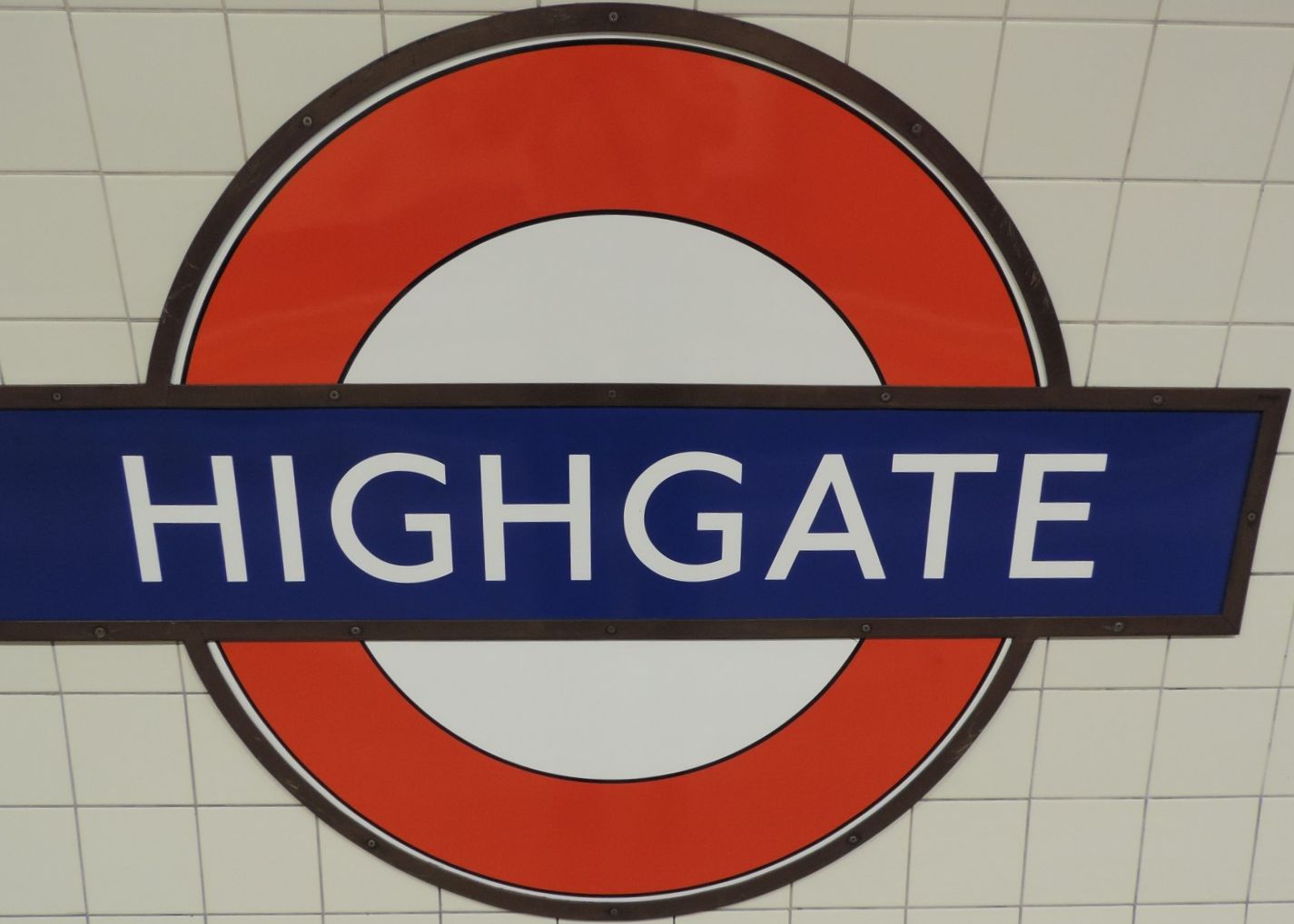 Highgate tube station is a London Underground station on Archway Road, Highgate, not far from Highgate Village in north London. It is on the High Barnet branch of the Northern line, between Archway and East Finchley, in Travelcard Zone 3.
Highgate tube station is a London Underground station on Archway Road, Highgate, not far from Highgate Village in north London. It is on the High Barnet branch of the Northern line, between Archway and East Finchley, in Travelcard Zone 3.
The present low-level station was built in the late 1930s as part of London Underground's Northern Heights plan. It is just part of the planned station but the advent of the Second World War postponed parts of the project and eventually led to its cancellation. It is built below and around the remains of an earlier surface-level station, which was originally intended to become part of the Northern line but ultimately closed instead.
Highgate station was originally constructed by the Edgware, Highgate and London Railway in the 1860s on its line from Finsbury Park to Edgware. Before the line was opened it was purchased in July 1867 by the larger Great Northern Railway (GNR), whose main line from King's Cross ran through Finsbury Park on its way to Potters Bar and the north. The railway to Edgware opened as a single-track line on 22 August 1867.
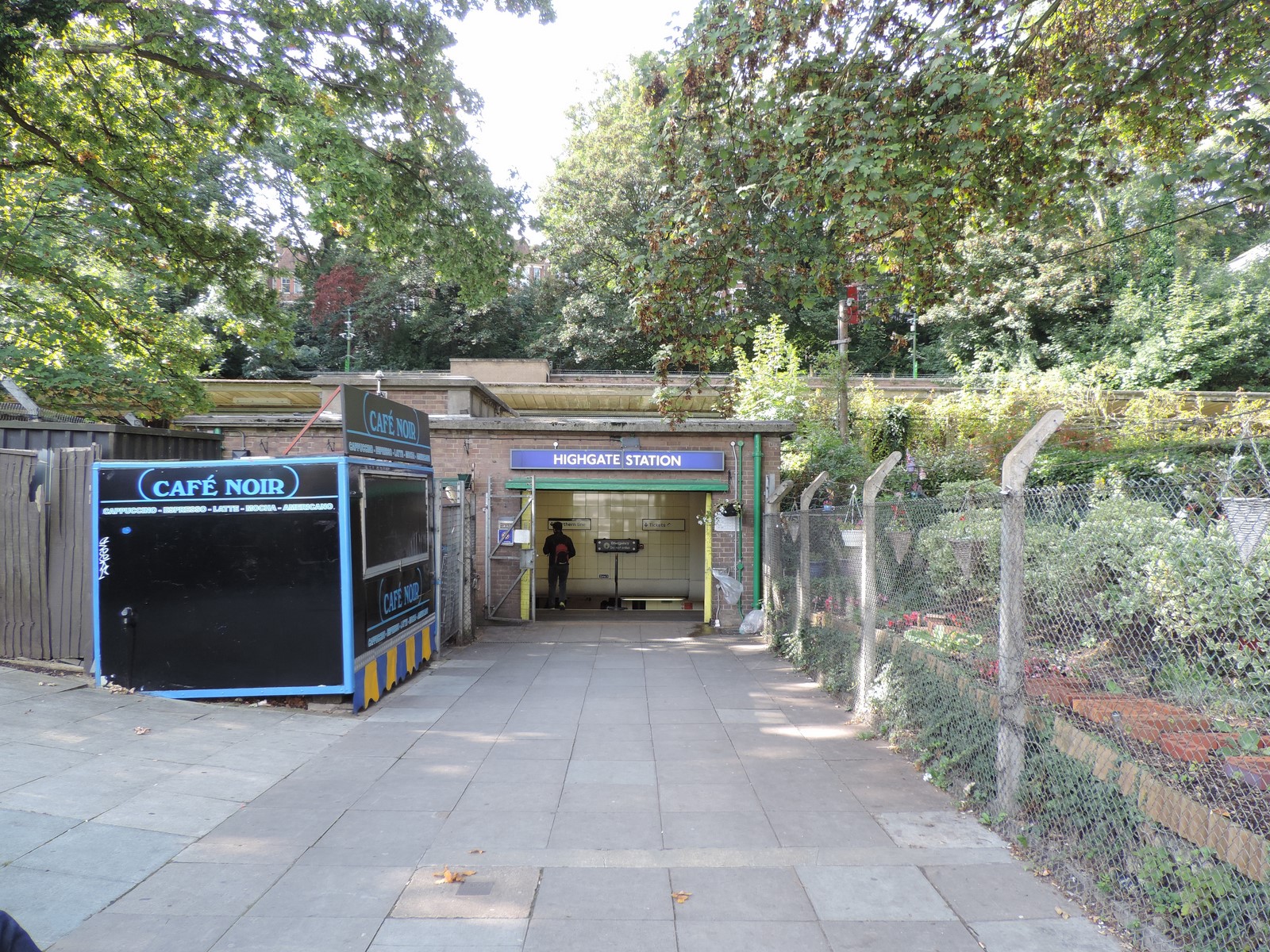 Because of the hilly terrain, the station was built in a deep cutting excavated from Highgate Hill adjacent to Archway Road. Tunnels penetrated the hillside at each end of the station, leading to East Finchley to the north and Crouch End to the south.
Because of the hilly terrain, the station was built in a deep cutting excavated from Highgate Hill adjacent to Archway Road. Tunnels penetrated the hillside at each end of the station, leading to East Finchley to the north and Crouch End to the south.
A branch line was constructed from Highgate to Alexandra Palace by the Muswell Hill Railway (MHR) and opened on 22 May 1872. The new branch split from the original route north of the station in a wide arc around Highgate Wood. The next station on the branch line when it opened was Muswell Hill, and in 1902 an intermediate station opened at Cranley Gardens.
In 1911, the MHR branch was taken over by the GNR. After the 1921 Railways Act created the Big Four railway companies, the GNR became part of the London & North Eastern Railway (LNER) in 1923.
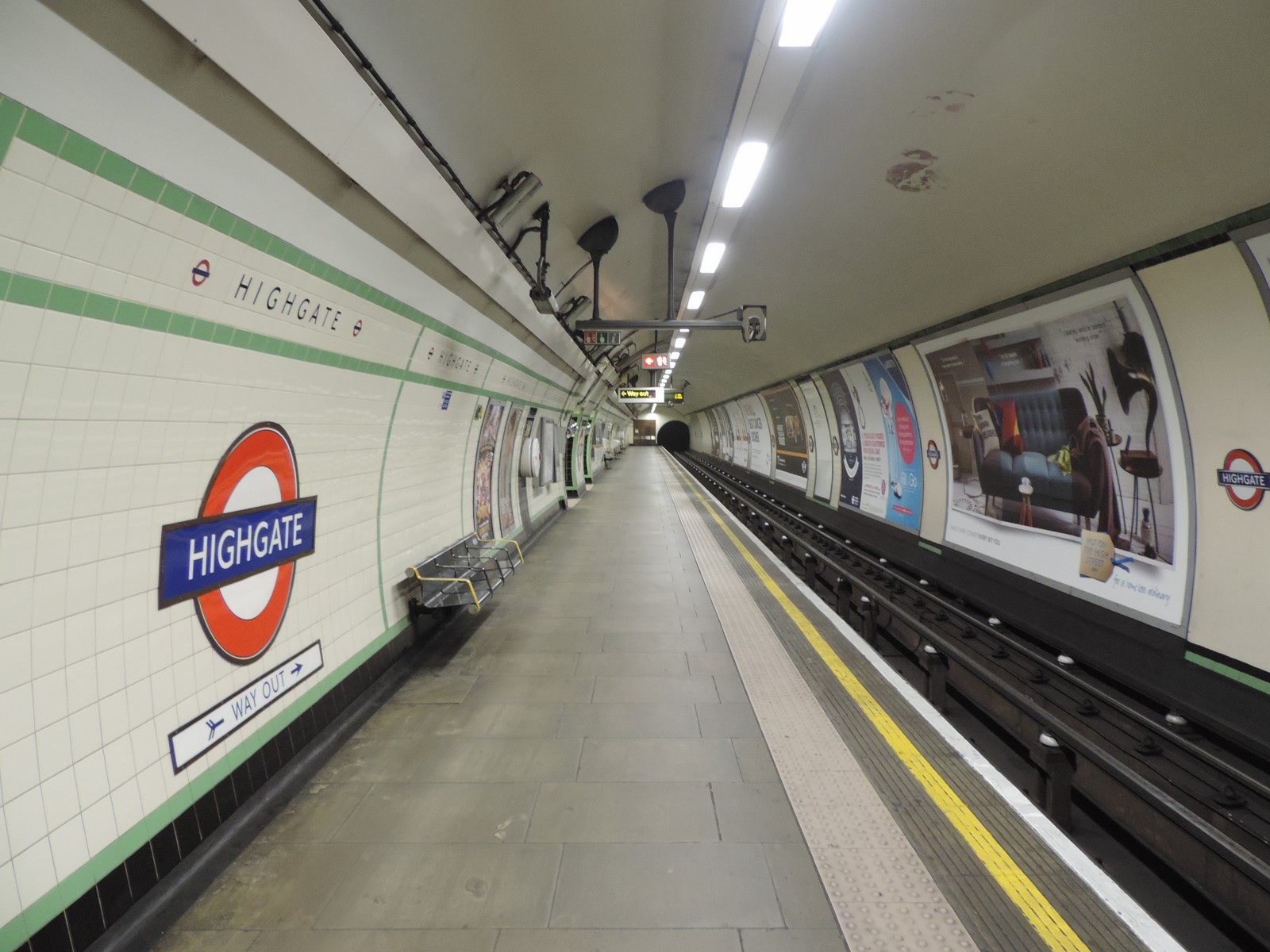 The construction of the Northern Heights project extended tube train services from the Northern line's terminus at Archway (then called Highgate) through a new section of paired tunnels under the High Level station to emerge north west of Highgate station, where connections to the LNER line to East Finchley were made.
The construction of the Northern Heights project extended tube train services from the Northern line's terminus at Archway (then called Highgate) through a new section of paired tunnels under the High Level station to emerge north west of Highgate station, where connections to the LNER line to East Finchley were made.
Services through the tunnel to East Finchley started operating on 3 July 1939 although the Low Level station and interchange with the High Level station did not open until 19 January 1941. The station is unique in having platforms long enough to accommodate nine-car trains, being built to this length in anticipation of future extensions at other stations. An unusual relic of the abortive plan to incorporate the high-level platforms into the Underground system was the numbering of the low-level platforms as 3 and 4 until the 1990s.
Because of the war the full plan for the reconstruction of the station designed by Charles Holden was not completed and parts for escalators intended for Highgate were used in central London stations. Works to electrify the LNER tracks from Finsbury Park, through Highgate to East Finchley and on the Alexandra Palace branch had been well advanced when war started but were postponed.
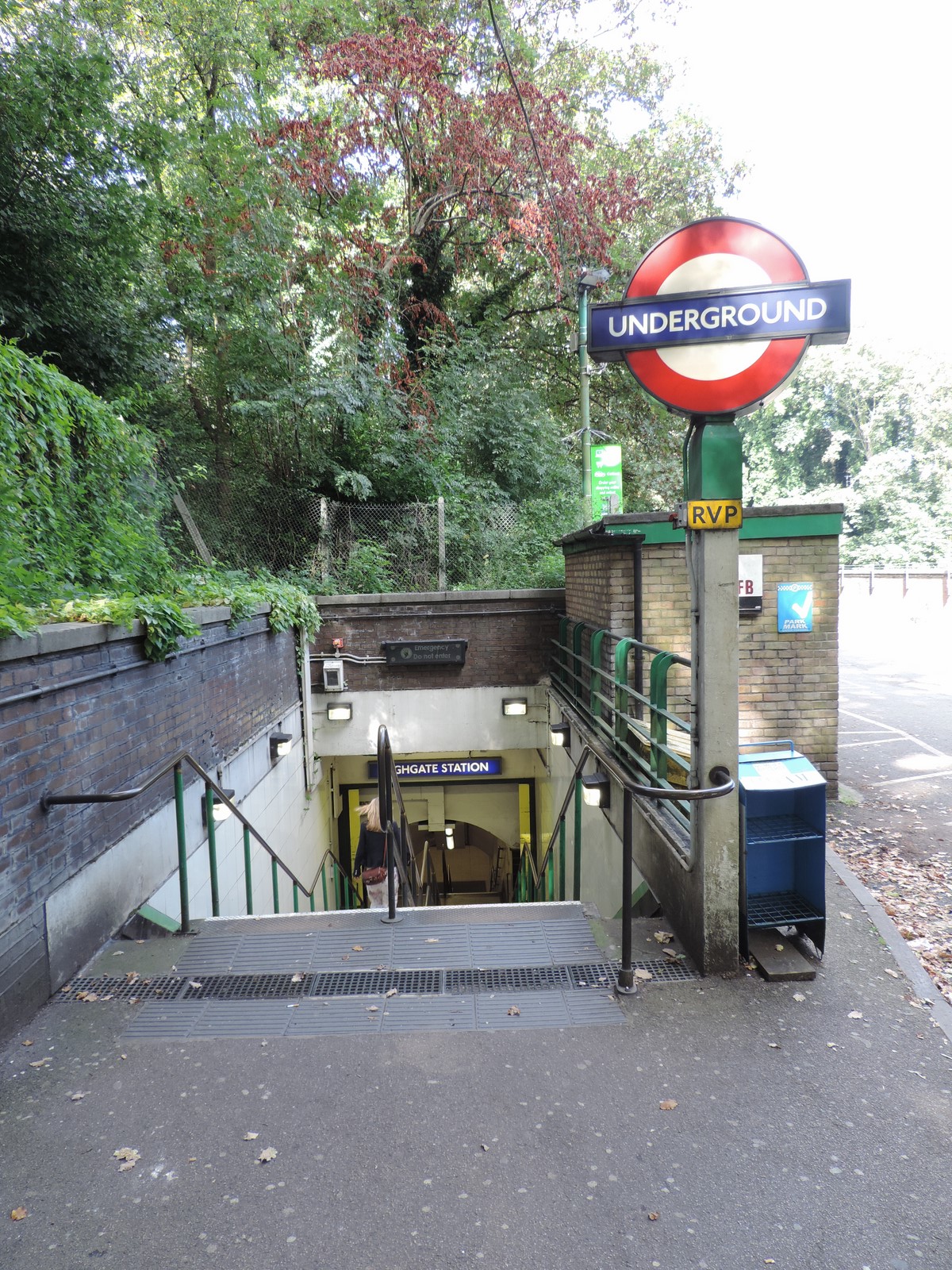 LNER trains continued to serve the High Level station, with services to East Finchley continuing until 2 March 1941. After that date LNER trains operated between Finsbury Park and Alexandra Palace only. The start of Underground services between Finchley Central and Mill Hill East in May 1941 was the last part of the Northern Heights Project to be completed.
LNER trains continued to serve the High Level station, with services to East Finchley continuing until 2 March 1941. After that date LNER trains operated between Finsbury Park and Alexandra Palace only. The start of Underground services between Finchley Central and Mill Hill East in May 1941 was the last part of the Northern Heights Project to be completed.
During World War II Highgate tube station was used, as many were, as a shelter from the bombing of London by the Luftwaffe, and latterly V-1 and V-2 bombs. The entertainer Jerry Springer was born at the tube station in 1944.
After the war, maintenance works and reconstruction of war damage on the existing network had the greatest call on London Underground funds. Funds for new works were severely limited and the priority was given to the completion of the Central line extensions to West Ruislip, Epping and Hainault. It was announced in October 1950 that the extension to Bushey Heath would not be proceeded with, but that extensions to Brockley Hill and beyond Mill Hill East might still proceed. In February 1954 it was finally announced that the extensions beyond Edgware and Mill Hill East had been abandoned. In October 1956 the depot buildings that had been built at Aldenham, in anticipation of the Bushey Heath extension, opened instead as London Transport's bus overhaul facility.
After a temporary closure between October 1951 and January 1952, British Railways (the successor to the LNER) ended services between Finsbury Park and Alexandra Palace permanently on 3 July 1954.
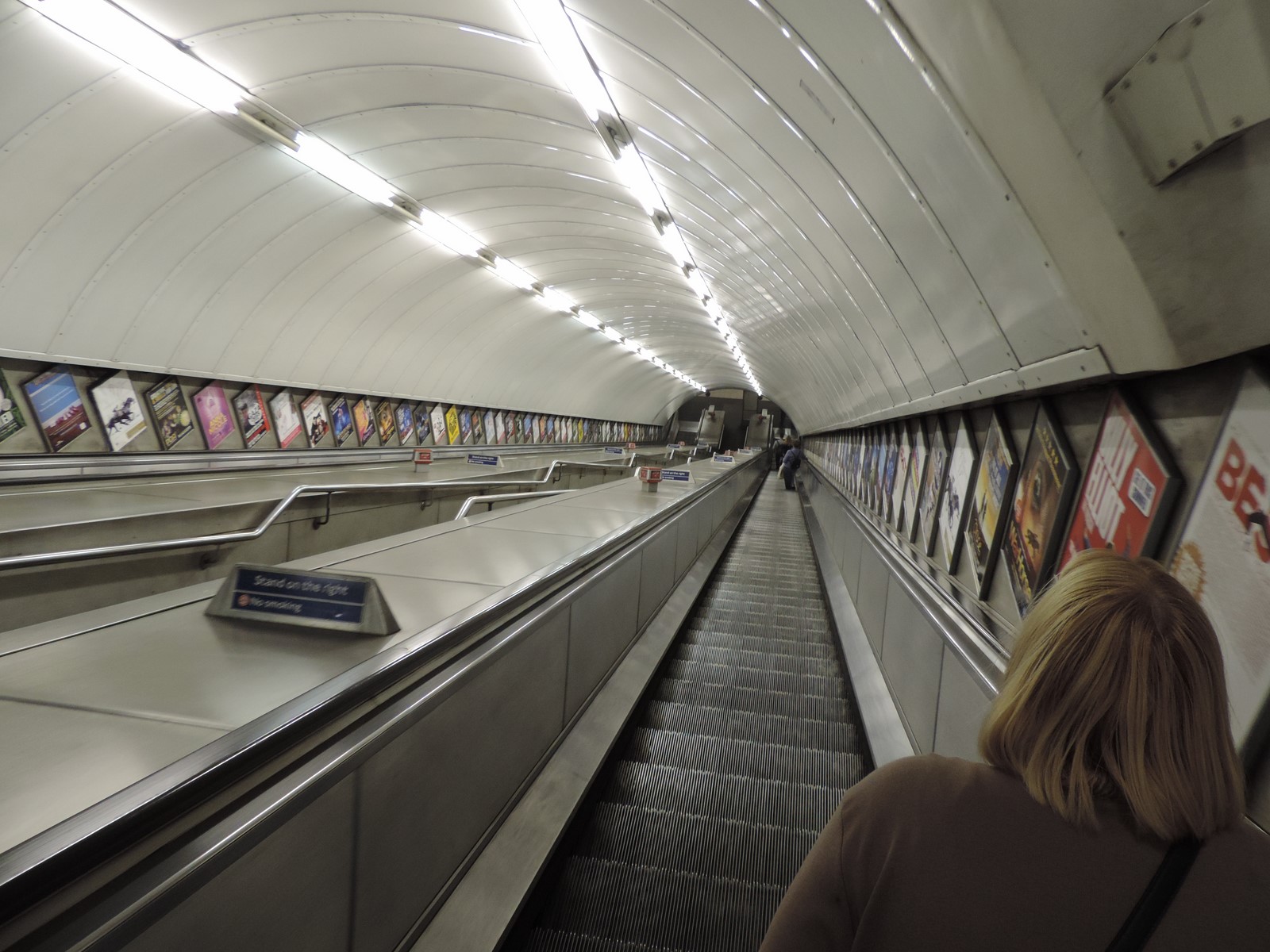 The unfulfilled plans for the station involved a much more substantial station building than the inconsequential structures that were eventually built. A large building at the top of the hill would have been the main entrance with dual escalators in a stepped enclosure down to the level of the surface platforms where a secondary entrance would have provided access from the car park. The building would have been topped by a statue of Dick Whittington and his cat by Eric Aumonier who created the Archer statue at East Finchley. The current buildings were built on a much more modest scale and the escalator link to the high level exit was not built until 1957. This link is housed in a concrete box built up the side of the hill but was never completed as intended and no down escalator was ever installed although the foundations for it were completed.
The unfulfilled plans for the station involved a much more substantial station building than the inconsequential structures that were eventually built. A large building at the top of the hill would have been the main entrance with dual escalators in a stepped enclosure down to the level of the surface platforms where a secondary entrance would have provided access from the car park. The building would have been topped by a statue of Dick Whittington and his cat by Eric Aumonier who created the Archer statue at East Finchley. The current buildings were built on a much more modest scale and the escalator link to the high level exit was not built until 1957. This link is housed in a concrete box built up the side of the hill but was never completed as intended and no down escalator was ever installed although the foundations for it were completed.
The surface platforms and their buildings are still in place and are visible when they are not obscured by trees on the sides of the cutting. A surviving station building from the GNR station, now a private house, may be seen from Priory Gardens. The surface station and overground tunnels have sometimes been used for filming and have appeared in several productions, notably the feature film Paperhouse, the TV series Messiah and the Steven Wilson music documentary film Insurgentes.
London Buses routes 43; 134; 263 and night route N20 serve the station.